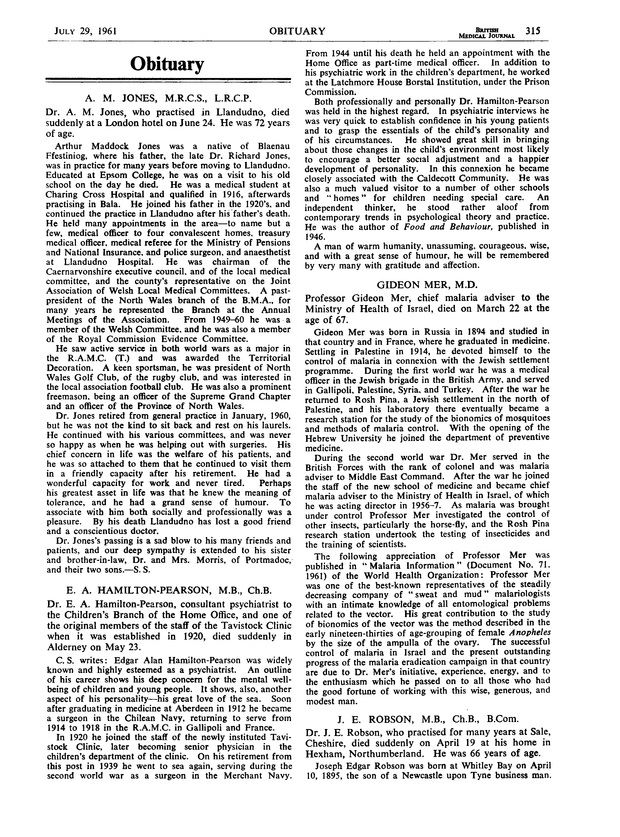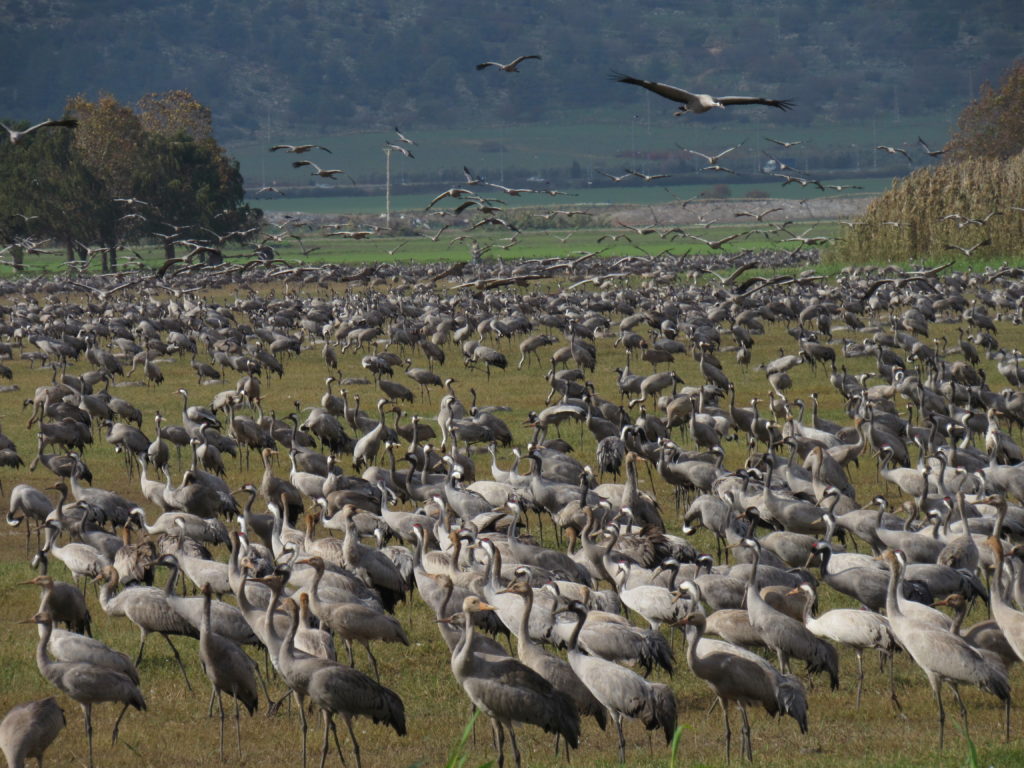In December we took a trip to the Hula valley, a wetland reserve located in northern Israel and a few hours out from Haifa by bus. The site is a major destination for ornithologists as it lies in the intersection of two major migration flyways. An estimated 500 million birds of over 400 different species pass through the valley each year, although I imagine that current environmental situation may mean those figures are out of date. Climate change notwithstanding we were able to see an awful lot of birds — mostly Cranes — taking a break from the long a perilous journey between breeding and wintering.
If we had visited the valley a hundred years earlier, it would have been a very different experience. We would have run the serious risk of catching Malaria for one thing, because the entire valley was swampland. Only in the 1950s was the process of draining these swamps undertaken. Canals were dug out canals and the river Jordan was deepened. The project was ostensibly a successful; the swamp was gone and the land could be used for agricultural purposes. As is often the case with such human enterprises, however, there were some unintended consequences. These swamps were full of peat — semi-decomposed vegetable matter — that when dried out tends to be seriously combustible. Sure enough the drained Hula valley was struck disastrous underground peat fires.
Unlike the forest fires that were sweeping California last year, which caught headlines and could be seen by satellites in orbit, peat fires can be incredibly hard to detect. They are a deeper, smoldering, slow burning kind of fire that takes place underground. They also happen on enormous scales. If they aren’t caught early enough the only thing that can put them out is torrential rain. Peat fires are, globally speaking, the largest fires on earth and are estimated to make up 15% of mankind’s contribution to greenhouse gases.
In the Hula valley the damage caused by the peat fires was extensive. In some places the damaged caused to the soil caused depressions as deep as 6-7 meters. This would go on to cause environmental damage to the Sea of Galilee and deterred migrating birds from stopping in the valley. In the 90s the decision was made to flood the Hula valley again. The idea was to develop a nature reserve by controlling the underground water levels. While the valley would remain drained during the winter, it wouldn’t dry out during the summer. And as they restored the valley, the birds began return.

The summer in Israel, for me at least, are months of enduring the ordeal of endless mosquito bites. I am however grateful that I’m not running the risk of malaria, a disease that thrives in the swamps such as the one that existed in the Hula valley. So I can’t say I disapprove of the original desire to transform the land. The individual who we can really credit of the elimination of the disease from Israel however is Gideon Mer. Visiting Rosh Pina a number of years ago during Passover I was taken to his old house and told that this was the man who had cured Malaria. Given that most diseases aren’t eradicated by the miracle drug or vaccine, but rather through public health policy, I think it is fair to say this is close enough to the truth, in Israel at least. Here is his obit in the British Medical Journal:

On the bus back to the Technion, we could see the fields still used for agriculture, less than a kilometer away from the wetland reserve. It seems amazing that you could maintain a bird sanctuary while growing crops next door. If birds like to do anything, or so I’ve been led to believe, it is to fly into a farmers field and gobble up all the seeds. Indeed, we could see guards on patrol, circling the fields in what looked like little golf carts, ready to scare off any hungry cranes.
It was enough to make me wonder: do scarecrows actually work? I’m more familiar with scarecrows as a trope in popular culture. And bizarrely scarecrows are usually depicted as being almost entirely ineffective in repelling birds, while being a very scary staple of the horror genre. If you visit the Wikipedia page for scarecrows, you’ll find there is far more page space devoted to scarecrows in fiction than to their alleged real world function.
I’m certainly not the first person to wonder this, or indeed to take to the internet to find an answer. Steve Coll in his New Yorker Diary back in 2009 describes being struck by the same question, but finds nothing helpful in his search results. It is a good example of an area of knowledge where the internet feels incredibly non-definitive. Since Coll’s own inter-quest for an answer something closer to a definitive answer appears close to the top of googles listings: a Mental Floss article linking to scientific studies, government webpages, and the Daily Mail. If you are also beginning to wonder if the ostensible legitimacy of areas of the web are giving way to a wave of jankiness then this article — the most informative survey of they literature on scarecrow efficacy I could find — is only going to stoke your fears.



